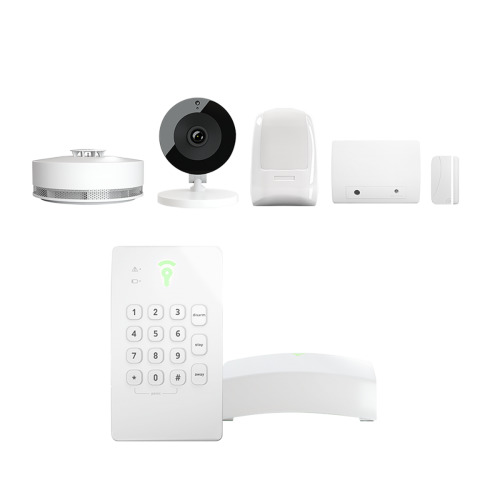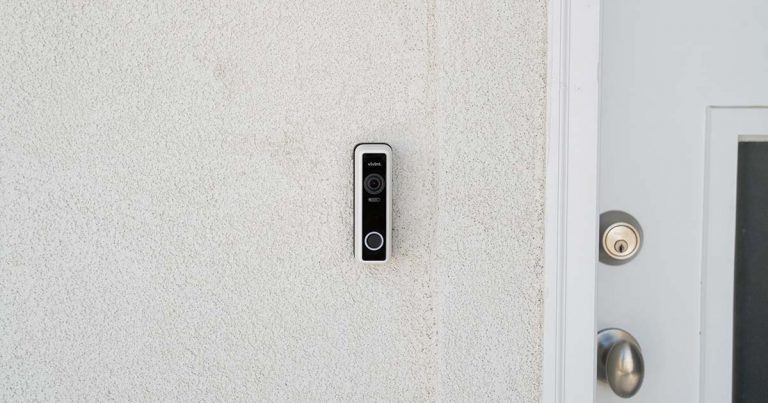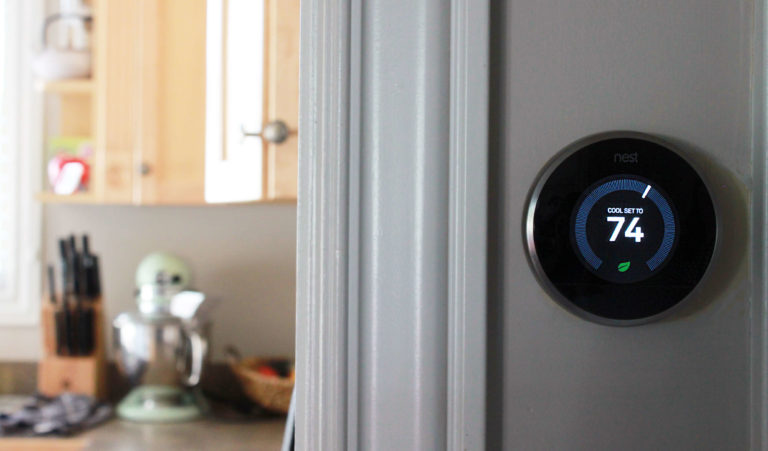If you make us choose between Frontpoint and Vivint, in most cases, we’ll pick Vivint
Frontpoint vs. Vivint
Frontpoint and Vivint are surprisingly similar systems (expensive and smart), and it’s easy to get stuck between them. We’d say Vivint is the better choice because it has smarter equipment and more monitoring options. However, Frontpoint definitely has better customer service than Vivint. Frontpoint does a lot of the little things that customers appreciate, like making it easy to buy its systems online, and it doesn’t have frequent major lawsuits like Vivint. (No, we’re not joking.)
Frontpoint pros and cons
Vivint pros and cons
Frontpoint vs. Vivint: Prices and monitoring plans
Frontpoint and Vivint have similar package and monitoring prices. The main difference is that Frontpoint’s starter equipment is cheaper while Vivint offers some lower-cost monitoring plans.
Frontpoint’s prices don’t include installation: you’ll set it up yourself. Vivint’s prices don’t include installation either–you’ll pay an extra $99 for an expert to install your system.
We think that Frontpoint is way too expensive for a system you have to install on your own. Ring Alarm, SimpliSafe, and Abode all charge pennies in comparison. But we’re also irked that Vivint charges additional money for installation. So honestly, there are no wins here.
Data effective 03/10/2022. Offers subject to change.
Frontpoint monitoring pricing
Good news: Frontpoint has just one monitoring plan. You don’t have to sift through a bunch of plans trying to pick the right one.
Bad news: Frontpoint has just one monitoring plan. You’re stuck with the $50-a-month option no matter what.
Luckily, Frontpoint’s plan comes with everything you need:
- 24/7 professional monitoring so someone’s watching for an alarm at all times
- App access so you can use your system from anywhere
- Camera storage so you can access video clips for unlimited cameras
- Home automation so you can use Frontpoint smart home devices
- Identity theft protection so your identity is just as safe as your home
But still, $50 a month? Oy vey. ADT’s the only big brand that offers monitoring that costs more than that, and the brand’s not exactly known for its bargain prices.
In summary, the plan is great but the cost is not-so-great, and it may not be worth it to everyone. If you’re really sold on Frontpoint in general and love the idea of identity theft protection rolled into your security, you’ll probably be just fine with this plan. But if you want the best deal out there or more plan options, it’s not for you.
Data effective 03/10/2022. Offers subject to change.
Vivint monitoring pricing
While Vivint monitoring isn’t cheap (its cheapest plan costs more than some services’ expensive plans), it offers more price options than Frontpoint.
Here are Vivint’s tiers, broken down:
- The Smart Security plan comes with 24/7 professional alarm monitoring and mobile app access
- The Smart Home plan adds smart home integrations and environmental monitoring (like smoke alarms, flood sensors, and so on)
- The Smart Home Video plan adds support for one security camera
But. Every additional camera after the first requires a $5-per-month fee on top of the Smart Home Video plan, and you can only add five more cameras. You could end up paying more than what Frontpoint charges only to get less camera storage and no identity theft protection.
You can choose to finance your Vivint equipment. If you do, you’ll be paying it off month by month instead of paying a lump sum. And to ensure you get it all paid off, Vivint locks you into a five-year (60-month) contract. So it’s usually easier to pay for the whole thing at once if you can.
Data effective 03/10/2022. Offers subject to change.
Is Vivint a better deal than Frontpoint? It depends on which Vivint plan you get.
Unsurprisingly, Vivint’s more cost-effective when you get the cheaper plans. But your Vivint plan is determined by what equipment you use, which in turn is determined by your home needs. So you don’t have much control.
In fact, depending on which equipment and monitoring combo you buy from either company, your costs vary quite a bit.
For instance, 60 months (the length of a Vivint contract) of monitoring for Frontpoint with the cheapest Frontpoint package costs $3,098.40, while 60 months of Vivint Smart Security with Vivint’s starter package is $2,398.40.
In contrast, Frontpoint’s most expensive package plus 60 months of monitoring is $3,797.28. An equivalent Vivint package plus 60 months of its most expensive monitoring is $4,048.39.
And if you subscribed to monitoring for more or less than the five years in our equations, that would change up the figures again. So would different combos.
One thing’s for certain, though: both these systems are expensive.
Frontpoint vs. Vivint: Security equipment
Frontpoint and Vivint are wireless, cellular-based systems with similar equipment selections. Both offer garage door controls, smart thermostats, locks, and environmental sensors, to name a few. And with either system, you can create a super-smart system that gives you remote access and data for everything.
But while most of Frontpoint’s equipment is outsourced from other companies, like Alarm.com and Skybell, Vivint makes most of its own equipment itself. When you’re paying hundreds of dollars for equipment–which is the norm for both these brands–you want something worth the money.
Vivint has tons of innovative pieces that almost justify its cost, like its doorbell camera and Car Guard. Frontpoint isn’t quite there yet. Our favorite unique thing that it offers is an outdoor smart plug, but it still has some work to do to catch up to Vivint’s equipment.

With Frontpoint, if a burglar breaks your system, it will still send an intruder alert to the monitoring center.
Frontpoint vs. Vivint: Cameras
Frontpoint’s clearly modeling some of its camera features after Vivint’s, and we’ve gotta say, that’s pretty clever. Vivint’s cameras are some of the best. Each one has something a little extra–like Smart Deter or outbound calling–and Frontpoint is copying those features almost exactly.
Frontpoint is poised to eventually catch up with its copycat strategy, but right now, its cameras aren’t quite living up to Vivint’s. At least Frontpoint’s cameras are cheaper.
Frontpoint cameras
Frontpoint offers four cameras: indoor, premium indoor, outdoor, and doorbell.
Data effective 03/10/2022. Offers subject to change.
The indoor camera and the doorbell camera are pretty average. Sure, they can see in the dark and detect motion. But the indoor camera doesn’t have two-way audio (which allows you to talk to anyone on the camera feed), and the doorbell camera is still running in 720p, which is far below the industry standard of 1080p. You’re going to see lots and lots of fuzz.
We see a lot of potential in the premium indoor and outdoor cameras, though.
The premium camera strives to replace the Vivint Indoor Camera in our hearts, and it’s doing a good job. It has outbound calling (that means anyone on the lens end of the camera can call a preset number, a feature that’s especially great if you have little kids).
The camera also works as a Bluetooth speaker. Not the normal use for security equipment, but we dig it. If an unsightly camera is gonna sit in your living room, you might as well get some sweet tunes out of it.
Meanwhile, the outdoor camera uses Perimeter Guard™, which is a lot like Vivint’s Smart Sentry feature. If someone shows up on your lawn, the camera will aggressively light up and make siren noises at them. Sadly, it doesn’t have facial recognition, so it’ll try to scare off friend and foe alike. But better safe than sorry, right?
Vivint cameras
Vivint has an indoor camera, outdoor camera, and doorbell camera.
Data effective 03/10/2022. Offers subject to change.
All three cameras have sirens, which are a great way to scare off anyone trying to be sneaky, and night vision, which lets you see clearly even in bad lighting.
The Vivint Indoor Camera also has outbound calling, but it doesn’t have two-way audio or work as a speaker. So the Frontpoint premium indoor camera gives you a little more mileage.
But the Vivint outdoor and doorbell cameras are a lot better than Frontpoint’s. Both have Smart Sentry, which is comparable to Frontpoint’s Perimeter Guard™ but much smarter.
Like Perimeter Guard™, Smart Sentry doesn’t have facial recognition, but it does use person detection. That means it won’t alert on animals or vehicles. And it also has a lurker detection feature, which means it will only blare at folks who’ve been hanging around for a while.

The video doorbell camera also includes package detection, so you’ll always know when you’re getting a package versus a visitor. There’s even an option to turn on Smart Sentry Deter. Deter is specifically for anyone who comes near your packages. It’s similar to regular Smart Sentry but with the aim of scaring off would-be package thieves as soon as they step onto the porch.
So overall, Vivint’s got better cameras than Frontpoint, and we think you’ll generally get more utility out of them, even at a higher price point.
Frontpoint vs. Vivint: Smart home integrations
Frontpoint and Vivint are extremely comparable when it comes to smart home stuff.
Both offer a good selection of equipment that you can buy alongside your security system. Both offer app access without extra fees. Both even have in-app smart home chains. (That means you can create complicated automation events, like setting the alarm system to disarm and the lights to turn on when you open the garage door.)
Also, both work with the same three smart home integrations:
- Amazon Alexa
- Google Assistant
- Z-Wave

The main difference is that Frontpoint’s geofencing is tied to your phone while Vivint’s is tied to your Car Guard.
Geofencing means that the system knows when you’ve left home. While the phone approach is more convenient (it works every time you leave the house), the car approach is more accurate (it won’t trigger Away smart chains when you walk down the street to get your mail). So it’s a draw between the two based on what you prefer.
Frontpoint vs. Vivint: Customer service
Frontpoint is the clear winner when it comes to customer service. It’s our pick for Best Customer Service out of every system we review.
The reps are friendly and helpful, especially during installation, and you can buy everything online without drawn-out conversations.
The only persistent complaint we see is that the monitoring is difficult to cancel. You’ll probably have to make multiple calls and respond to various emails before they cancel your service.
On the other hand, Vivint offers a customer experience riddled with issues.
You have to call in or talk to a door-to-door salesperson to buy a Vivint system. A lot of people can’t or won’t make phone calls, which is an issue in itself. And if that’s not enough, the door-to-door salespeople have a terrible reputation.
Seriously, Vivint has had a ton of lawsuits because its salespeople keep finding new ways to be dishonest. It’s almost impressive in a concerning way.
- Frontpoint customer service number: +1-877-602-5276
- Vivint customer service number: +1-802-377-9111
Frontpoint vs. Vivint: Which is better?
In most cases, we’d pick Vivint over Frontpoint. The costs and home automation are similar, and the equipment is slightly better.
But if good customer service is your bread and butter, it’s Frontpoint all the way. The customer experience for Frontpoint users is unparalleled.
- Prices and monitoring plans: Tie. Neither of these systems is a bargain, but which is the better deal depends on what you want, how it’s monitored, and how long you’re going to use it.
- Security equipment: Vivint. Both systems have smart, expensive (!) equipment, but Vivint is way better at justifying the cost with fancy doodads.
- Cameras: Vivint. Vivint’s a bit ahead of Frontpoint in the camera game with its features, but Frontpoint is catching up by playing copycat.
- Smart home integrations: Tie. From smart home tricks to compatibility, these systems are nearly identical.
- Customer service: Frontpoint. Customer service is one of Frontpoint’s strongest points and one of Vivint’s weakest. ‘Nuff said.
If you’re not feeling enthused about either of these, you can find something else from our Best Home Security Systems review.
Data effective 03/10/2022. Offers subject to change.
Methodology
When comparing two different home security systems, we consider the following:
- Price
- Equipment
- Home automation
- Cameras
- Customer service
To compare these five points, we collected data through equipment tests, customer review comparisons, expert reviews comparisons, website scouring, and personal experience.
One of our reviewers lived with the Fronpoint system for several weeks. Another has lived with the Vivint system for over a year. We hope to spend even more time with the Frontpoint system in the future for even more in-depth research.
Frontpoint vs. Vivint FAQ
Wireless systems typically either don't need plugs or don’t need wires to communicate with other equipment. If they’re both of those things, they’re wirefree.
Frontpoint and Vivint use some plugs but don’t use wires to communicate with other equipment (except when it comes to some of the cameras).
A cellular security system uses cell signals to communicate with its monitoring center instead of a landline connection.
Cellular-based security systems usually use cell signals alongside Bluetooth, radio signals, and/or Wi-Fi to communicate between the hub and the individual sensors.
The biggest downside to relying on cell signals? If you live in a rural area, Frontpoint or Vivint probably won’t work for you. You’ll need a landline system, likely from ADT.
Related Articles




